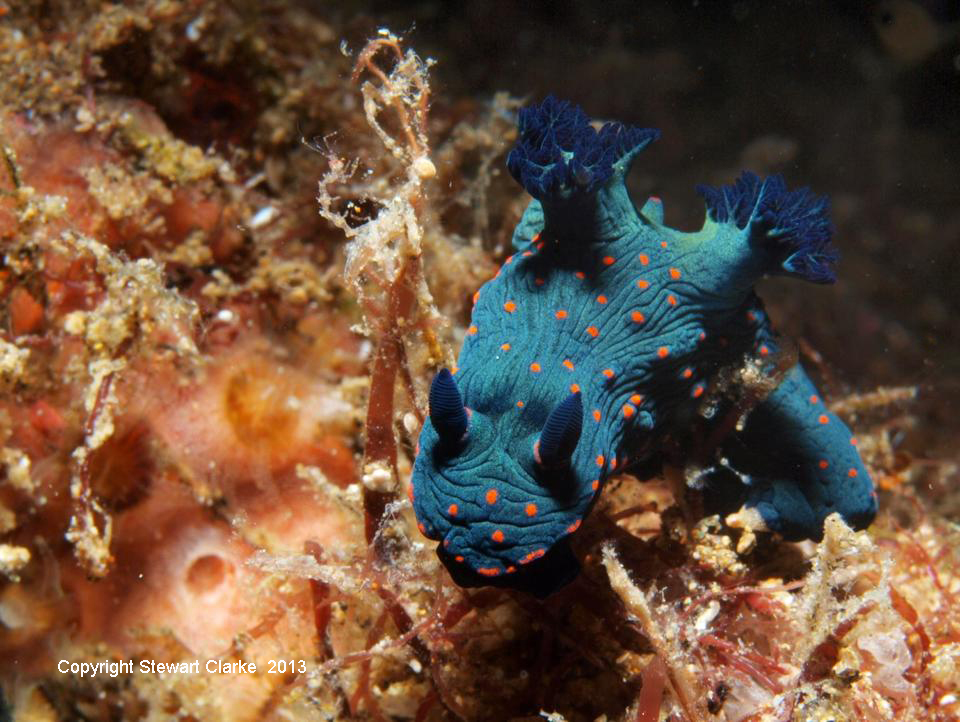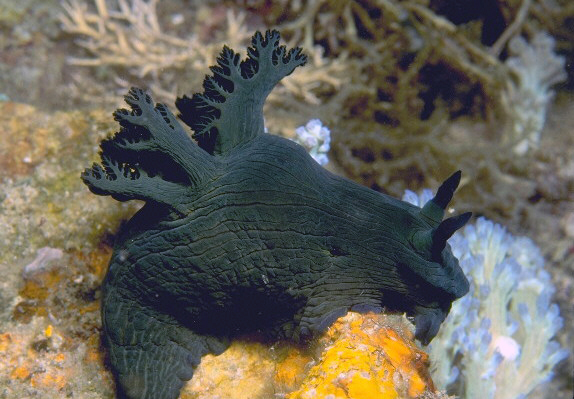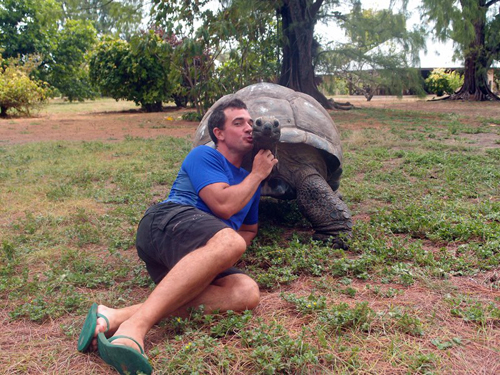 |
Nembrotha c.f. milleri
Image courtesy of Stewart ClarkeSecret Bay, Anilao, Philippines
Nembrotha milleri without "spots"
Pic taken by Webmaster at Anilao many years ago
 |
Nembrotha c.f. milleri Gosliner & Behrens 1997
I have seen several of this brand of Nembrotha lately with bright spots highlighting the orifice of the mantle glands which can secrete noxious chemical metabolites. Recall recent BOW of Nembrotha c.f. mullineri . Stewart's specimen here is a little brighter blue-green than the specimen we show in Indo-Pacific Nudibranchs, on page 113, but otherwise matches perfectly. I will still include the "c.f." just in case I am wrong and this is an undescribed species, although I am guessing not, as it is from the type locality of N. milleri. Like the N. mullineri, a couple of weeks back, the specimen above's orange spots, adds to the aposomatic warning coloration of the species. Studies show that members of Nembrotha biotransform alkaloid chemicals from the tunicates they eat, into noxious chemical defensive secretions called "tambja amines." This is just one more example of how amazing the evolution of chemical defense and aposomatism in opisthobranchs is. Reaching 100mm in length, this species geographic range includes the entire western Indian and western Pacific Oceans. |
Post Script: (6/25/2013) After our two slugologists looked at the internals of this mystery critter they found the radula of blue dorid has pectinate outer teeth, so it is clearly D. immonda. Still troubling, the problem becomes more complex - it is very likely that D. immonda is a synonym of D. nucleola and that D. nucleola is the older name. To be able to definitely answer that question they are going to have to do genetic sequencing of material from both and see if they are the same. That will take a bit longer.
Sammamish, WA 98074
Jun., 2013
Send Dave email at davidwbehrens@gmail.com
Stewart and friend
 |
Stewart has been diving since 2000 following a holiday to Egypt. It wasn't long before he started taking a camera with him on subsequent trips and his passion for underwater photography grew from there. He has been living in the United Arab Emirates for the last five years and during that time his obsession towards Nudibranch has been steadily increasing. So far he has travelled to Lembeh, Zanzibar, the Philippines and the Seychelles in his quest for Nudibranchs. However The majority of his diving takes place in the UAE where he has currently managed to document over 70 species so far.
Stewart Clarke |

|
